NASA is ready to kick-start an exciting new era of space exploration by launching the first mission in its Artemis programme. Artemis 1 aims to demonstrate new rocket technology that will be key in achieving the ultimate goal of the project: returning astronauts to the Moon for the first time since 1972.
“This is a mission that truly will do what hasn’t been done and learn what isn’t known,” says Mike Sarafin, Artemis 1 mission manager at NASA Headquarters in Washington.
“It will blaze a trail that people will follow on the next flight, pushing the edges of the envelope to prepare for that mission.”
On Artemis 1, an uncrewed capsule called Orion will journey around the Moon. Artemis 2 will see a crew orbit the Moon without landing, followed by Artemis 3 carrying the first female astronaut and astronaut of colour to the lunar surface later this decade.
This time, the space agency plans to maintain a permanent presence on the Moon. In the words of one of the project’s chief engineers, “to advance from a 20th-Century Moon shot, to a 21st-Century Moon stay.”
If all goes to plan then Artemis could eventually become as famous as Apollo in the annals of space history.
When is the Artemis 1 launch?
The first launch on 29 August 2022 was scrubbed after engineers found an 'engine bleed'. The team was unable to get one of the four RS-25 engines (on the bottom of the rocket’s core stage) to the proper temperature range for liftoff.
Meanwhile, the rocket and Orion spacecraft remain in a safeandstableconfiguration.
The next Artemis 1 launch is targeted for Saturday 3 September 2022, at 2:17pm EDT (7:17pm BST). In the days leading up to the next target window, the teams will modify and practise propellant loading procedures, as well as configuring platforms at Launch Pad 39B.
Engineers are continuing to gather additional data, but if bad weather or other delays prevent the launch attempt on 3 September, the next window after that will be on 5 September 2022.
How to watch the Artemis 1 launch
If you can’t make it to Florida to see it in person, NASA is launching The Artemis Real-time Orbit Website (AROW) which will allow you to track the mission’s every move.
“[It’s] a really powerful way to engage with the mission and understand the scope of what NASA is trying to accomplish with Artemis 1,” says Seth Lambert, the Orion programmer who created AROW.
Further details are being announced on the @NASA_Orion Twitter feed.
Major news broadcasting outlets will be covering the launch, or you will be able to watch live on YouTube:
When to tune in to the Artemis launch
Artemis 1 will launch from Launch Pad 39B at NASA’s Kennedy Space Center at Cape Canaveral, Florida – most of the Apollo missions launched from 39A, but that is currently being leased by Elon Musk's SpaceX. The second launch attempt is currently scheduled for Saturday 3 September.
Here is the timeline of events as they currently stand:
- Thursday 1 September, 6pm EDT (11pm BST): NASA held a pre-launch briefing for the second attempt.
- Friday 2 September, 9am EDT (2pm BST): A final briefing will happen before it's all-hands for the launch attempt the following day.
- Saturday 3 September, 4:37am EDT (8:37am GMT): Countdown to the launch attempt will resume.
- Saturday 3 September, 5:45 am EDT (9:45am GMT): Fuelling coverage of the launch attempt will begin. If you're up at this time, you'll be able to watch the propellent being loaded. It was at this stage in the first attempt that prompted the scrub, when Engine Number 3 did not reach the required temperature for the super-cold liquid oxygen and liquid hydrogen.
- Saturday 3 September, 12:15 pm. EDT (5:15pm GMT): Full launch coverage will begin.
- Saturday 3 September, between 2:17 pm and 4:17 pm EDT (between 7:17pm and 9:17 pm BST): Weather and systems permitting, lift-off!
- After launch: post-launch briefing, time TBC.
- After launch: Orion trajectory burn, time TBC.
- After launch: Orion will send its first view of the Earth, back to Earth. Time TBC.

The Artemis programme began in 2017 and the first launch window was on the morning of Monday 29 August between 8:33am and 10:33am local time (between 1:33pm and 5:33pm BST).
The first launch attempt was officially scrubbed at 8:34am local time (1:34pm BST).
The next target launch will be on 3 September 2022, and the weather conditions are looking favourable for the attempt.
What is the Space Launch System?
One of the most impressive parts of Artemis 1 is the brand new mega-rocket that will loft it into space: the Space Launch System – or SLS for short.
“SLS is the most powerful rocket NASA has ever built,” says former acting NASA Administrator Steve Jurczyk. “[It's] an incredible feat of engineering and the only rocket capable of powering America’s next-generation missions.”

SLS will accelerate the Orion capsule to speeds of nearly 40,000km/h and generate 15 per cent more thrust than the famous Saturn V rocket that sent the Apollo astronauts to the Moon. It’s powered by four RS-25 engines, with each one weighing as much as an elephant and standing as high as a double-decker bus.
When it launches with the Orion capsule on top, the whole structure will be almost 100 metres tall. That’s the equivalent of two Olympic size swimming pools or taller than the Statue of Liberty. It will weigh more than 2,600 tonnes - about the same as 20 blue whales. It is capable of delivering 27 tonnes of payload to an orbit beyond the Moon. They’ll tweak the configuration when it comes to sending a human crew, ramping up the total payload to 38 tonnes.
Each launch costs over $2bn and the whole project has cost $23bn.
What is the Orion capsule?
The Orion capsule, named after the famous constellation in the night sky, is designed to be a home away from home for the next generation of astronauts. It comes in three key parts, the main one being the Crew Module. There's space for four astronauts – one more than the crews of three who flew on the original Apollo Moon landing missions.
It'll definitely be cosy in there as the module has an overall habitable capacity of just nine cubic metres. That's only about 60 per cent of the volume you'll find in the back of a Transit van.
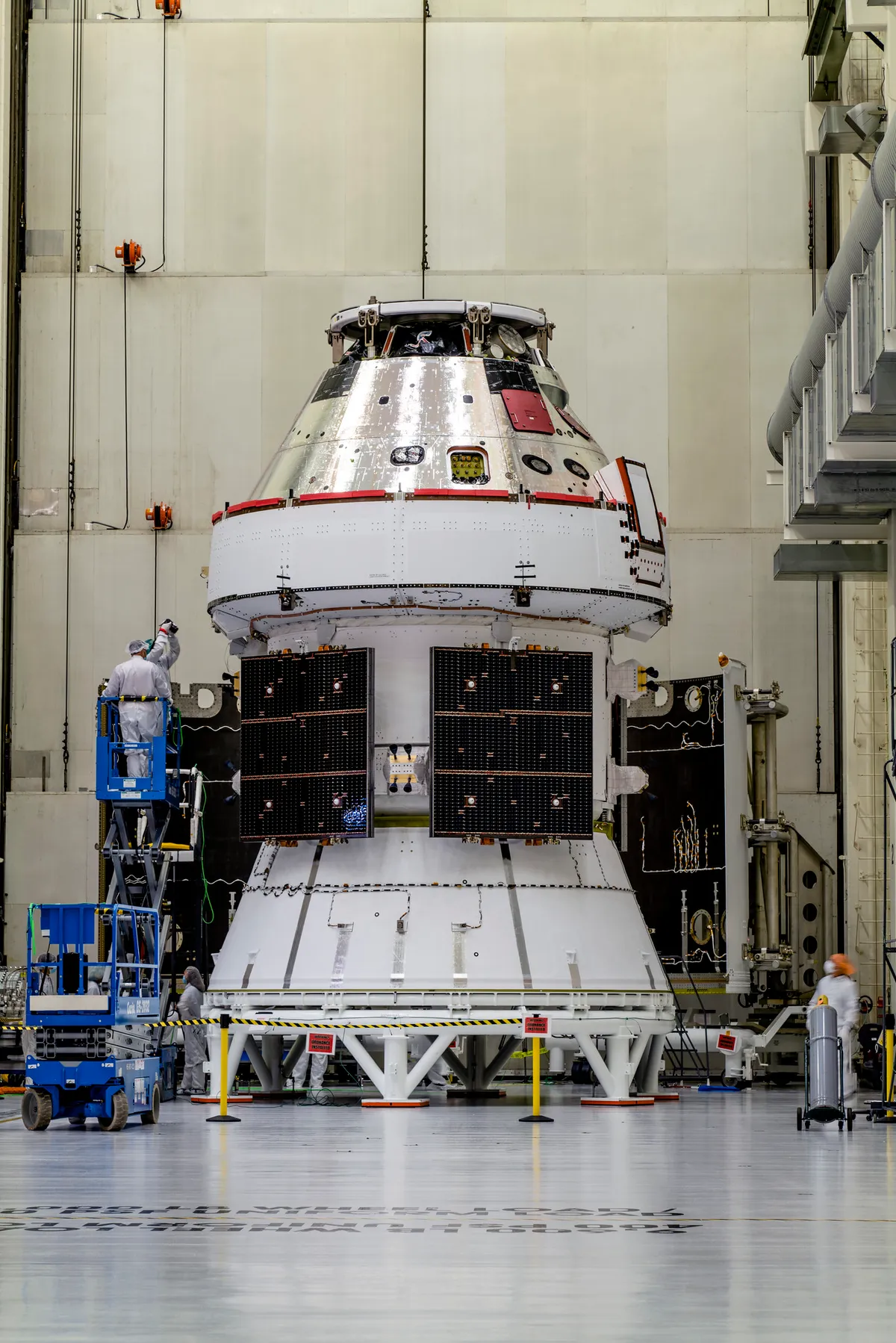
Yet it is the Service Module, designed and built by the European Space Agency, that does most of the work. It provides the propulsion to fling Orion out of Earth orbit and on a rendezvous path with the Moon. The Service Module will also supply water and air to the crew on later Artemis missions (Artemis 1 is uncrewed).
The final part of Orion is no less important. Space travel is dangerous, with a history of emergencies on launch. The Launch Abort System can react within milliseconds and quickly blast the Crew Module away from the rocket and launch pad for a safe splashdown in the ocean.
What’s on board the Orion capsule and why?
Without any astronauts on board Artemis 1, there is space to include other 'passengers' in the Crew Capsule.
Commander Moonikin Campos is a mannequin being used to measure the effects of accelerations and vibrations on future human astronauts. Named after Arturo Campos, an engineer who helped to save the Apollo 13 crew in 1970, he is pictured here in the commander’s seat of Orion wearing an Orion Crew Survival System flight suit – the same uniform that will be worn by the Artemis 2 and 3 crews.
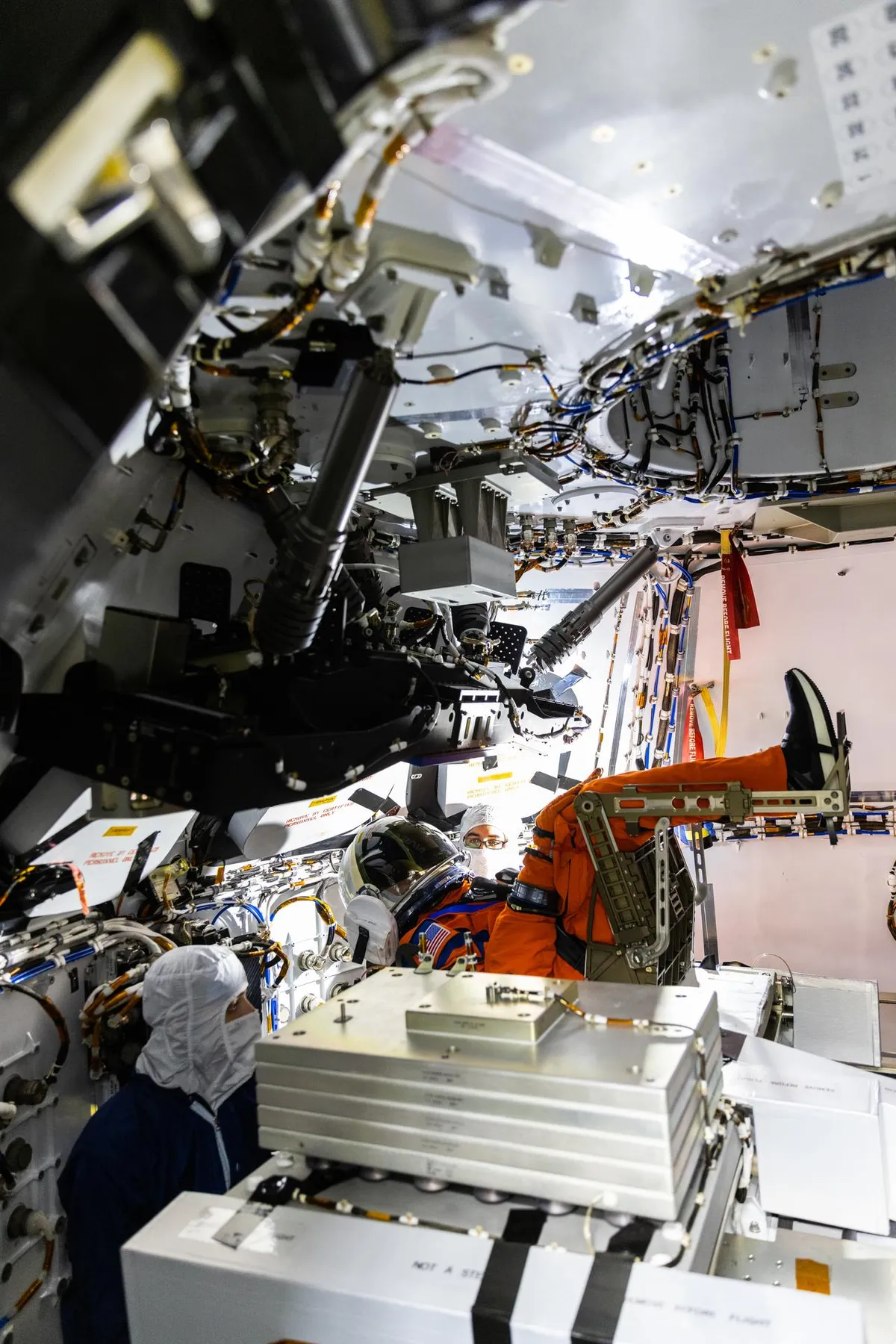
A pair of anatomically correct torso analogues named Helga and Zohar positioned onboard Orion will be used to study the effects of radiation on the human body during lunar flight. They are made of materials specifically designed to mimic bones, soft tissue and organs.
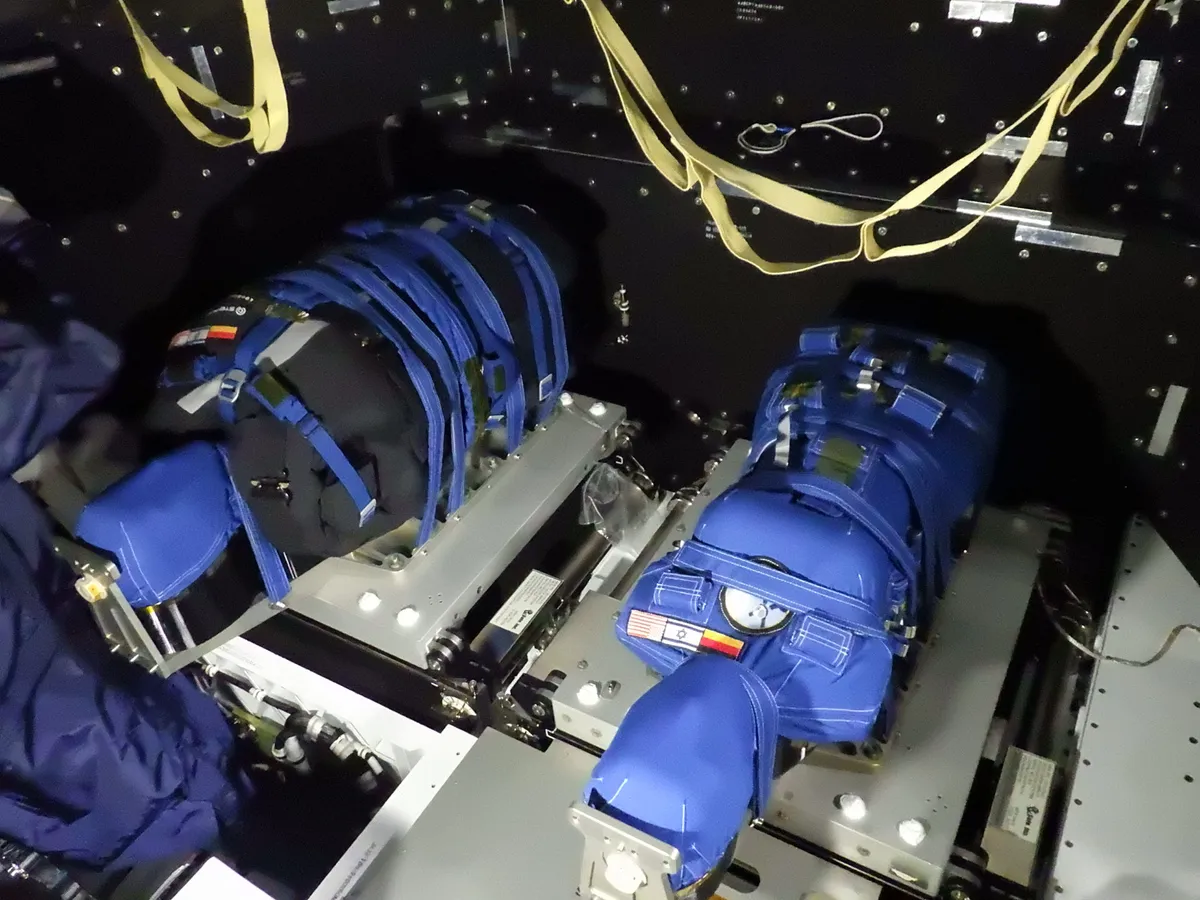
And here are just some of the quirky things that will fly around the Moon as part of the Artemis 1 Official Flight Kit:
- A doll of the cartoon character Snoopy, decked out in the iconic NASA orange jumpsuit, will act as a zero gravity indicator.
- Aardman has provided the European Space Agency with a Shaun the Sheep animatable puppet that has been used in Aardman productions. “Although it might be a small step for a human, it’s a giant leap for lambkind,” says David Parker, ESA’s director for human and robotic exploration. Shaun travelled across Europe and the US to “train” for the mission and his journey was documented and presented in a series of ESA blog posts leading up to the launch as part of their media campaign.
- LEGO is getting in on the action, too. Four mini figures – Kate, Kyle, Julia and Sebastian – will fly on Artemis 1. "Our hope is that including Kate and Kyle in this space mission will excite students about the possibilities of STEAM careers and engage them in their own learning journey," said Esben Stærk, president of LEGO education.
- A Moon rock sample and an engine bolt from Apollo 11 will tie Artemis to Apollo. This follows a long-standing tradition as Neil Armstrong took a piece of the Wright Brothers' first successful aircraft to the Moon in 1969.
The Artemis 1 flight path
After hurtling towards the Moon for several days, Orion will travel within 100 kilometres of the lunar surface. This allows mission controllers to use the Moon's gravity to fling Orion out to a distant orbit some 70,000km beyond the Moon. After six days of collecting valuable data from orbit, the return home begins.

It will travel back towards the Moon's surface to get another kick in the direction of the Earth. The plan is to splash down in the sea close to a recovery ship off the coast of Baja, California. A team of divers will inspect the spacecraft before it is hauled back to shore, completing a four-to-six-week, two-million-km round trip.
What's next for the Artemis mission?
If everything goes smoothly with Artemis 1 then four astronauts will fly on the next mission, Artemis 2, currently scheduled for launch in May 2024. The plan is to fly around the back of the Moon and return to the Earth. The crew will set the record for the furthest humans have ever travelled into space.
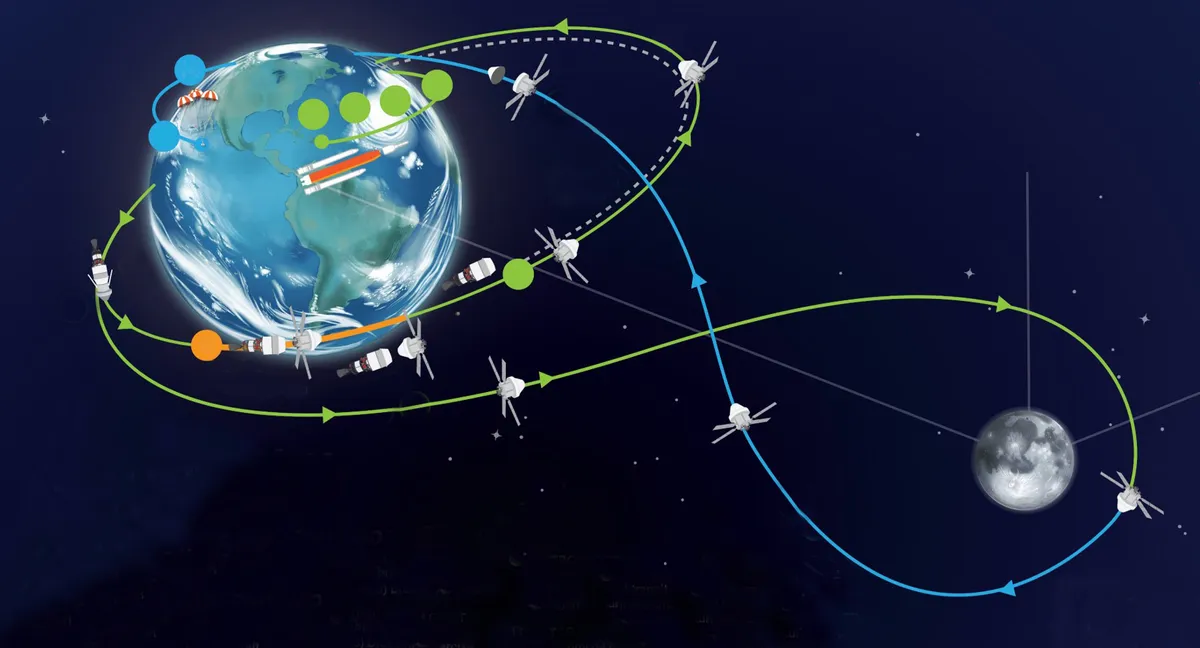
Next, Artemis 3 isthe one for the history books. In 2026 astronauts will land on the Moon for the first time since Gene Cernan became the last person to leave the lunar surface back in 1972. Two astronauts will spend a week close to the Moon’s South Pole and conduct experiments including prospecting for lunar water. Another two will stay in lunar orbit.
In August 2022 NASA shortlisted 13 potential landing sites, all within six degrees of the lunar South Pole.
“Several of the proposed sites within the regions are located among some of the oldest parts of the Moon, and together with the permanently shadowed regions, provide the opportunity to learn about the history of the Moon through previously unstudied lunar materials,” says Sarah Noble, Artemis lunar science lead for NASA’s Planetary Science Division.
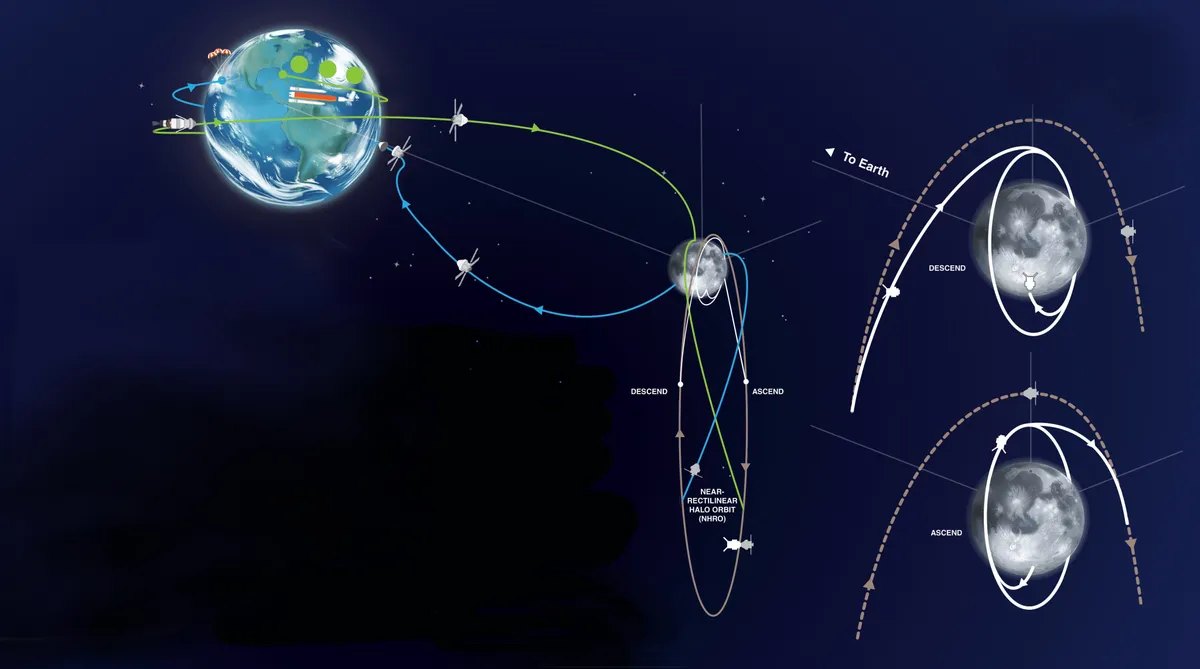
Then it will be time to build a permanent presence away from Low Earth Orbit. The key goal of this mission, Artemis 4, is to help build Gateway – a space station in orbit around the Moon. Currently slated for 2027, it would act as a staging post for future trips to the lunar surface.
Who are the Artemis astronauts?
We don’t know exactly who is flying yet, but we do have some limited information. The Artemis 2 crew will consist of three NASA astronauts and a colleague from the Canadian Space Agency. It will be the first time a non-NASA astronaut has left low Earth orbit.
The crew of Artemis 3 hasn’t been publicly revealed either, but NASA have promised to land the first female astronaut and first astronaut of colour on the Moon. They will come from the wider Artemis team, a collection of 18 astronauts – 9 women and 9 men – already revealed by NASA. Half of them have never flown into space before. Arguably none are household names yet, but that will surely change.
Artemis astronaut Kate Rubins, who became the first scientist to sequence DNA in space back in 2016, perhaps put it best when she said: “"When we're having dark times, to think of the fact that we might have people on the planet able to look up and know that there are humans on the Moon... I can't even describe what kind of benefits that might [bring].”
Read more about space exploration:
